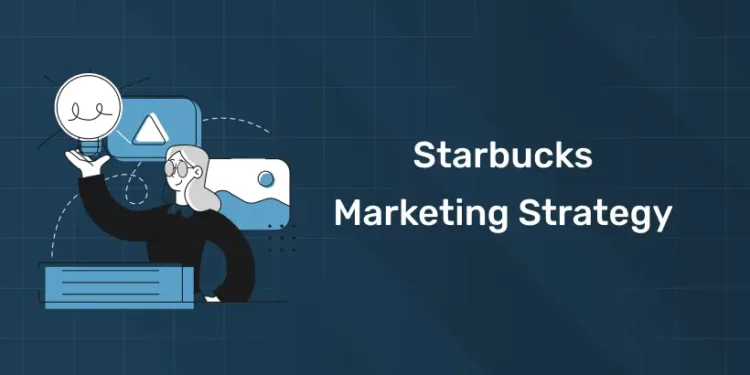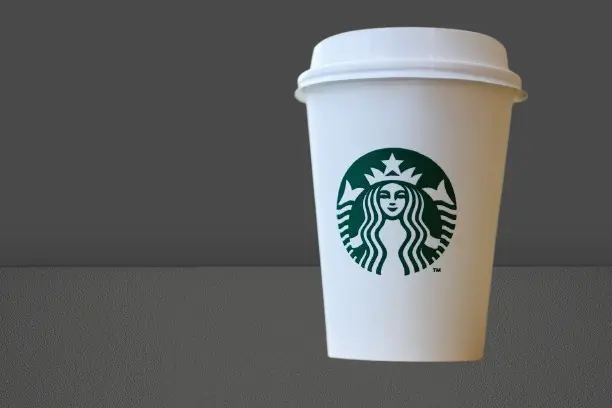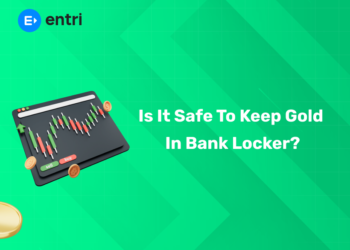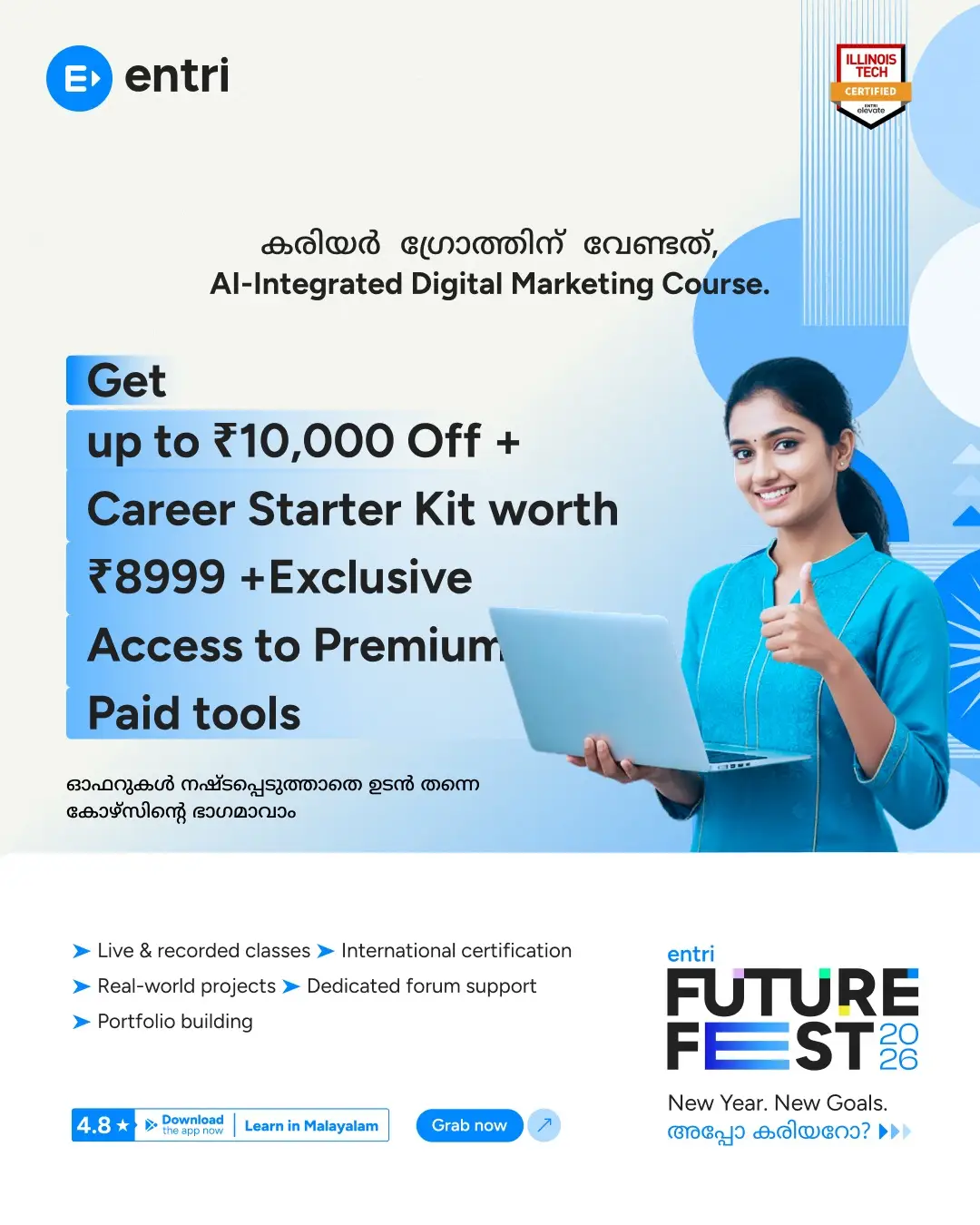Table of Contents
Globally Recognized Brand -Starbucks, Premium Coffee and a Unique Café have become synonymous with experience. Starbucks was created in Seattle, Washington in 1971, and developed into one of the world’s largest coffee house series, and worked in more than 80 countries. The success is not only due to the quality of the coffee, but also a high strategic Starbuck Marketing Strategy approach that distributed the brand as a lifestyle choice, which is much higher than just drinks.
The importance of Starbucks marketing strategy lies in the ability to create a strong emotional relationship with customers, cultivate the brand and expand new markets. Through creative advertising, customer commitment and community -building efforts, Starbucks again defined how people like and like coffee. Creating a “third place” between home and quality work, customer service and make it a favorite of coffee lovers. The specific brand and ability to complete different cultures have helped Starbucks become a leader in the coffee industry and maintain a steady global image.
In this article, pathhak can expect intensive analysis of main components in Starbucks marketing strategy, including branding technology, digital marketing measures, appearance on social media and customer -focused approach. Whether you are a marketing professional, a professional enthusiast, or just curious about how Starbucks built a global empire, the blog will provide valuable insight into strategies that have promoted success.
Learn Digital Marketing Fundamentals! Get Free Demo Here!
Starbucks Brand Positioning
Starbucks ranks itself as a premium coffee brand that only gives more than coffee. This focuses on providing a unique experience, where customers can comfort, work or socialize in a comfortable environment.
How Starbucks positions itself as a premium Coffee Brand
- High-Quality Coffee: Starbucks is known for using high quality coffee beans and ensuring that each drink is designed with caution. This focuses on quality that people feel they receive something special and are worth the price.
- Unique In-Store Experience: Starbucks aims to offer more coffee more than just one cup; It provides a welcome environment where customers can relax, work or socialize. Each store is designed to be comfortable and comfortable, and invites you to good light, comfort music and seating.
- Premium Pricing: Starbucks charge higher prices than regular coffee shops, which helps it as a premium brand.
- Strong Branding and Global Recognition: Starbucks has created a strong brand that is recognized globally.
Unique Selling Proposition (USP)
An unique selling proposition (USP) is one that stands out of its rivals a product or service. The USP is a unique advantage that provides a product or business to customers, and helps it stand in the market and attract loyal customers.
Starbucks USP is not just the coffee, but it provides experience. Starbucks makes it unique that it provides a comfortable and comfortable environment where customers can relax, relax or work, enjoy high quality coffee. Stores are designed to do “third place” between home and work, where people can spend time. This combination of quality coffee, personal service and a welcome environment makes Starbucks stand out from other coffee shops.
Customer Loyalty and Brand Perception
Starbucks focuses on creating a personal relationship with customers. It offers a friendly, welcome environment where people spend time comfortably. To reward loyalty, Starbucks also offers a popular prize program, where customers serve brands with each purchase, leading to free drinks and special offers.
Starbucks is seen as a premium brand that only offers more than coffee. People see it as a place where they can relax, work or socialize. The brand promotes stability, moral procurement and corporate social responsibility, which improves the positive image. Because of this, customers feel good about supporting Starbucks, see it as a brand that cares about quality, community and the environment.
Learn Digital Marketing Fundamentals! Get Free Demo Here!
Digital Marketing Strategies
1: What is the primary goal of SEO (Search Engine Optimization)?
Starbucks uses a variety of digital marketing strategies to contact your customers and strengthen your brand. By combining these digital marketing strategies, Starbucks effectively connects its audience, loves and strengthens its position as a global coffee leader.
Social Media Marketing
Starbucks uses Instagram for beautiful product display, Twitter for fast customer calls and TIKTOK for fun, trendy videos. These strategies are linked to the public to the brand and create enthusiasm around their products.
1. Instagram:
On Instagram, Starbucks focuses on visual storytelling. Since Instagram is about all photos and videos, Starbucks shares high quality photos of their drinks, etc.
- By asking questions and associated with followers with the characteristics of the customer post.
- Play seasonal expeditions, such as promoting holiday drinks with festive pictures.
- Use Instagram stories and wheels for fast, attractive videos that highlight new products or fun challenges.
2. Twitter:
On Twitter, Starbucks is engaged in real -time interview with customers. They tweet about new products, promotion and company updates, and answer the customer’s questions or answers.
- Share quick updates and offers of limited time.
- Run the hashtag campaign, encourage users to tweet with a specific hashtag during events or product launch, which helps spread the word and tie the wider audience.
3. TikTok:
Tiktok is about all small, fun videos, and Starbucks uses this platform to create trendy materials that appeal to young audience.
- Create viral challenges that encourage users to create their own videos with Starbucks drinks.
- Fun with shop or production processes, share the scenes back and forth.
Email Marketing Strategies
E -post marketing is a strategy where companies send e -mail to customers to market products, share news or create conditions. Starbucks use e -post marketing effectively to keep customers busy and encourage them to go to their store.
- Personalized Offers: For example, if a customer often buys lets, Starbucks can send them a special discount on Latce. This makes customers feel valuable and are more likely to come back.
- Exclusive Promotions: Starbucks regularly sends e -mail with special offers and promotion, such as “Buy a street one free” offer or exemption from seasonal drinks.
- Rewards Program Updates: Starbucks user e -post to keep customers informed about Starbucks Rewards points. These updates make customers feel so that they get more value from the brand.
- Re-engagement Emails: For example, starbucks a “we miss you!” Send the next purchase with an e -mail with a discount.
Mobile App & Personalization
Starbucks Mobile app allows customers to book, pay and create prizes, while privatization means that Starbucks offers and suggests every customer he likes. This makes the experience more practical and pleasant.
- Pay with the App: The app lets users pay directly, which increases the box.
- Earn Rewards: With each purchase through the app, customers serve stars (brands), which can be redeemed for free drinks and food.
- Customized Offers:For example, if you often buy ice coffee, you can get discounts on ice coffee.
- Special Promotions: App provides birthday premiums or personal publicity to users etc.
Become an AI-powered Digital Marketing Expert
Master AI-Driven Digital Marketing: Learn Core Skills and Tools to Lead the Industry!
Explore CourseCustomer Engagement & Loyalty Programs
Starbucks has created strong customer commitment and loyalty through its loyalty programs.
1. Starbucks Rewards Program
The Starbucks Rewards program is an important part of their strategy for customers to return. Here’s how it works and gives benefits:
Benefits of Starbucks Rewards Program:
- Earn Stars: Every time a customer trades in Starbucks, they earn stars (points). The more they buy, the more stars gather.
- Free Drinks and Food: When customers have earned enough stars, they can redeem them for free things like drinks, food or even goods.
- Exclusive Offers: Starbucks often send individual offers, such as discounts or free goods, only for reward members. This makes customers feel special.
- Birthday Reward: On their birthday, members get a free drink or treatment, making the day more special.
- Early Access: Reward is available to everyone before reaching new products or seasonal drinks.
- Convenient App Experience: Customers can track their stars, order and pay through the Starbucks app, making it easier to use the price plan.
Impact on Customer Retention:
- Increased Loyalty: The Rewards program encourages customers to visit Starbucks to serve the stars and redeem prices. It keeps them loyal to the brand.
- Repeat Purchases: Knowing that they earn points against free goods motivates customers to shop more.
- Personalized Experience: Starbucks Tailors provides customer preferences, which make each customer feel recognized and appreciated. This helps to strengthen the relationship with the individual touch mark.
- Sense of Exclusivity: Members enjoy the first access to the products, such as quotas, giving them a sense of being part of a particular group.
2. Personalized offers & gamification
Individual offers and gamification are two strategies, which use Starbucks to make the customer experience more comfortable and attractive.
Personalized Offers:
Starbucks creates special offers that fit each customer based on their preferences and buys habits. For example:
- If a customer loves ice coffee, Starbucks can send them an exemption for especially ice coffee.
- If you often visit Starbucks, they can get offers that encourage them to try something new or reward them for their loyalty. These individual offers make customers feel valuable and encourage them to visit Starbucks because they get offers that match their taste.
Gamification:
Gamification occurs when companies use items that games to make activities more fun and attractive to customers. Starbucks through the price plan does this by collecting stars for each purchase for customers. Starbucks can also create challenges or bonus point opportunities, such as:
- “Buy two drinks this week and earn extra Stars.”
- “Try a new item to unlock bonus points.”
Content Marketing & Storytelling
Content marketing and storytelling are two strategies that use Starbucks to contact customers in a meaningful way. This happens when Starbucks shares valuable and attractive materials (eg articles, videos or posts in social media) to attract and inform customers instead of marketing only products.
How Starbucks Leverages Storytelling in Marketing
Starbucks uses storytelling in marketing to contact customers at an emotional level by sharing meaningful stories.
-
Origin Stories: Starbucks often tell stories where their coffee comes from how it has grown, cut from farmers around the world and sour. This helps customers feel more associated with the product and its quality.
-
Customer Experiences: Starbucks shed light on real customers and their daily routine stories, showing how Starbucks fits in life. This makes the brand feel more personal and reliable.
-
Brand Values: For example, they can share how they support coffee farmers or reduce the environmental impact. These stories help create a positive image of Starbucks as a brand that cares more than just selling coffee.
-
Seasonal & Product Stories: Starbucks also uses storytelling when launching new drinks or seasonal products.
Seasonal & Cultural Marketing
Starbucks is known for its seasonal and cultural marketing, and one of its biggest successes is Pumpkin Spice Latte (PSL). This drink has been excellent, and here it is said that Starbucks has made it so popular:
Seasonal Appeal:
Pumpkin Spice Latta is only available during the declining season. By limiting accessibility, Starbucks creates enthusiasm and expectation among customers who are ready for it every year. This season’s specificity makes PSL feel special, which encourages customers to buy it before they buy it.
Cultural Connection:
Starbucks combined Pumpkin Spice Latte with the feelings of falling traditions and at the same time. For many people, the fall is about the cooler season, hot drinks and comfort. PSL, with cinnamon, nutmeg and its taste of pumpkin, correctly match the mood of the weather. Starbucks Tapper PSL in this cultural love to fall as a drink during that time.
Success Story:
Starbucks made the pumpkin spices only laid during the decline, adding it to comfortable, seasonal traditions and popularized to create enthusiasm using social media, making it a favorite seasonal drink.
Learn Digital Marketing Fundamentals! Get Free Demo Here!
Pricing & Product Strategy
Starbucks uses a smart price and product strategy to attract customers and retain its premium image. Starbucks sets prices higher than other coffee shops, as they stay as a premium brand.
Premium Pricing Model & Perceived Value
Premium price model means that charging high prices for products think they are more valuable or special. Starbucks uses this model as it stays as a high quality brand. Customers are ready to pay more for Starbucks coffee because they think they are doing something better.
Perceived Value:
The Perceived value is how much customers think something is worth. In Starbucks, people feel that they pay for more than coffee. They think they get:
- High quality coffee made from best legumes.
- A comfortable and stylish environment to relax or work.
- Friendly and skilled service.
- A unique experience with personal options, such as adapting their drinks.
Product Innovation & Limited Edition Offerings
Product innovation in Starbucks means making new and exciting drinks or foods regularly. It is eager to make customers interested and try to do something different. For example, Starbucks introduces new flavors, healthy alternatives or unique ways of making coffee, such as cold bridge or oat velters. This keeps the menu fresh and exciting, and encourages people to travel more often.
Limited version Prasad is special products available in a short time, such as pumpkin spices flicked collapse or drinks with holiday theme. These limited time offers create enthusiasm because customers know they cannot get them throughout the year. This feeling of urgency is more likely to buy products before it leaves. Starbucks keeps customers excited by creating new products and offering special, limited time drinks that people like to try before they disappear. It continues to return to customers for new experiences.
Become an AI-powered Digital Marketing Expert
Master AI-Driven Digital Marketing: Learn Core Skills and Tools to Lead the Industry!
Explore CourseOffline & Omnichannel Marketing
Starbucks uses offline marketing to attract people in the store and use Omnichannel Marketing to give customers a comfortable experience on different platforms, whether in stores, online or mobile apps use
Store Ambiance and In-store Experience
Starbucks focuses a lot on creating a comfortable and welcome atmosphere and experience in the store. The overall goal is to make more stars than just one place to have coffee. This is a comfortable place where people spend well, whether alone or with friends. When you go to a Starbucks, you notice:
- Comfortable seating: There are comfortable chairs and tables where people can relax, work or chat with friends.
- Warm lighting and decor: The light is soft and invited, which makes the space feel relaxed. The shops are designed with modern stylish furniture that combines to comfort.
- Pleasant music: Soft background music plays to create a cool and nice atmosphere.
- Free Wi-Fi: Many people come to Starbucks to work or study, and free internet makes them easy to stay for a long time.
Collaborations & Brand Partnerships
Collaboration and brand partnership takes place when Starbucks makes teams with other brands, companies or affected, to do something unique or reach a wide audience. This participation helps Starbucks to be healthy and relevant to customers.
- Food and beverage collaborations: Starbucks partner to introduce new taste or special menu elements with popular food brands, such as limited-Setsrit drinks or snacks.
- Retail partnerships: Starbucks collaborates with stores like supermarkets to sell their coffee beans, ready-to-drink beverages, or other branded products outside the cafes.
- Influencer partnerships: Starbucks works with social media affected to market new products, special offers or events, which help reach the young target groups on platforms such as Instagram or Tikok.
Sustainability & Corporate Social Responsibility
Sustainability and corporate social responsibility (CSR) are important parts of Starbucks values and how they run their business. This effort is focused on making a positive impact on the environment and society. Starbucks focuses on protecting the environment and helping people help people through moral coffee purchases, reducing waste, supporting farmers and participating in social projects. They aim to do well for both planet and society.
How Starbucks markets sustainability initiatives
This is how they market their stability:
-
In-store messaging: Starbucks shows information about its environmentally friendly practices in stores, such as using recycled materials or encouraging customers to bring their own reusable cups.
-
Social media and website: Starbucks share posts and updates on stability projects on platforms such as Instagram, Twitter and their official websites. They highlight programs such as moral coffee purchases and reduce waste, making it easy for customers to see how the company cares about the planet.
-
Partnerships and certifications: Starbucks shows their partnership with organizations such as Fair Trade and purely Forest Alliance, which proves that coffee has grown environmental manager. They use these certificates in marketing to build trust with customers.
-
Product packaging: Starbucks often print the message on the coffee cups, bags or other packaging, and causes customers to know their commitment to continuous practice, such as using morally acidic coffee beans.
Impact on brand loyalty and consumer perception
Case Study & Competitor Analysis
A case study looks at how Starbucks’ strategies work in real life, while competitor analysis compares Starbucks to other coffee brands to see what makes it stand out or where it could improve.
A Real-world Example of a Successful Starbucks Marketing Campaign
A great example of a successful Starbuck marketing campaign is Pumpkin Spice Latte (PSL) campaign. Every fall, Starbucks brings back pumpkin spices, a seasonal drink that has become incredibly popular.
Why it was successful:
-
Seasonal excitement: Starbucks created a sense of urgency by obtaining drinks just in the fall. This makes people ready for this every year, sales sales.
-
Strong social media presence: Starbucks used platforms such as Instagram and Twitter to promote pumpkin spice, making a hashtags like #psl. This helped to focus on the drink, with customers who shared their love for it and posted pictures of their Lates.
-
Cultural trend: Starbucks converted pumpkin spices latte to a cultural tendency. It just exceeded a drink; It became a symbol of decline, some people associated with comfortable autumn vibes and seasonal fun.
Comparison with Competitors
1. Brand Positioning:
- Starbucks: Status itself as a premium coffee brand. It focuses on offering high quality coffee, a comfortable experience in the store and moral source of coffee beans. Starbucks also charge high prices due to this premium picture.
- McCafe (McDonald’s): Gives coffee at a less expensive price. McCafe focuses on the convenience, serves fast coffee with fast food.
- Dunkin’: Known to be more budget -friendly and practical, Dunkin’ Coffee ‘Coffee, Donuts and other snacks quickly. Their focus is on every day coffee drinkers who want fast service at low costs.
2. Product Offerings:
- Starbucks: Coffee drinks, seasonal drinks (like Famous Pumpkin Masala Latte), a wide range of tea and food. They also focus on customization so that customers can adapt their drinks.
- McCafe: Provides a small selection of coffee and drink. McCafé focuses on basic coffee options such as espresso, cappukino and pretends with low adjustment options.
- Dunkin: Coffee and baked goods such as donuts and bagels are experts. Their menu is more concentrated on fast, grab-end-go elements, making it convenient for people at the step.
3. Pricing:
- Starbucks: It is known for its premium price. Customers pay more for high quality drinks, environmental experience in the store and Starbucks brand experience.
- McCafe: Offers coffee at low prices. This is cheaper for those who drink coffee every day who want something fast and cheap.
- Dunkin: Also provides reasonable prices, making it an alternative for budget -conscious customers who want a good coffee at a lower price than Starbucks.
4. Customer Experience:
- Starbucks: Welcome the experience in the store, focuses on creating a comfortable. Many people use Starbucks stores to work, study or meet friends. They also provide free Wi-Fi, comfortable seating and a comfortable atmosphere.
- McCafe: Settings The convenience of the atmosphere. Their coffee is often part of the fast food experience, so it’s more about getting coffee fast instead of resting in cafes.
- Dunkin: Like McCafe, Dunkin emphasizes speed and convenience. Their stores focus more on faster service than a place to roam.
Learn Digital Marketing Fundamentals! Get Free Demo Here!
Conclusion
Finally, Starbucks’ marketing strategy has been an important factor for its global success. By positioning itself as a premium coffee brand, Starbucks is able to stand out from the participants. The company’s focus on offering high quality coffee and creating a welcome, comfortable environment helps create a loyal customer base.
One of the biggest forces in Starbucks marketing strategy is the customer’s involvement. Through the Starbucks Rewards program, the company continues back by offering personal prices, discounts and exclusive benefits for customers. It helps to build a deep connection with customers, combined with Starbucks digital marketing efforts such as loyalty programs, social media campaigns.
Starbucks uses platforms such as Instagram, Twitter and Tikok to share creative materials, market new products and encourage customer interaction. His approach to telling the story, sharing the stories behind the coffee and the brand values helps Starbucks feel more personal and reliable.
Overall, Starbucks’ marketing strategy is successful as it combines the storytelling with the power of brand positioning, customer engagement and digital tools. By placing their customers at the center of the strategy and offering constant value, Starbucks has managed to stay ahead of its rivals and maintain its position as a global leader in the coffee industry.
| Related Links | |
| Starbucksks Marketig Strategy | Samsung Marketing Strategy |
| Zara Marketting Strategy | Adidas Marketing Strategy |












